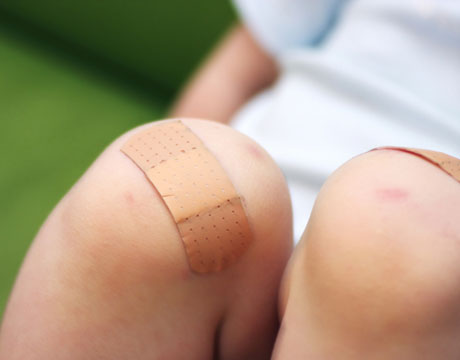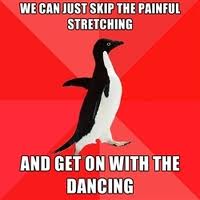Band-Aid Solution or Fixing The Cause?
 Foam rolling (soft tissue work), stretching, and rest. These are examples typical treatments for common aches and pains runners tend to experience, but often times the cause of the injury is left unaddressed.
IT (Iliotibial) Band syndrome is so classic. Everyone is told to stretch, use the foam roller, and possibly rest. If that's all it took, though, why does the pain come back time and time again?
Foam rolling (soft tissue work), stretching, and rest. These are examples typical treatments for common aches and pains runners tend to experience, but often times the cause of the injury is left unaddressed.
IT (Iliotibial) Band syndrome is so classic. Everyone is told to stretch, use the foam roller, and possibly rest. If that's all it took, though, why does the pain come back time and time again?
Are you destined to carry your foam roller with you to every run so that it doesn't flare up?
Are you sentenced to stretching those tight hamstrings every single day because, well, you've always had tight hamstrings? How come they're always tight?
Let's look at those three “treatment” options in more detail because they seem to be recommended all the time yet usually fall short of curing runners completely. I call them band-aid solutions because they're merely treating the symptoms.
Stretching
Besides the fact that most  people do it 100% wrong (they overstretch and cause the muscle to contract in order to protect itself from your brutality), this is a classic band-aid solution.
people do it 100% wrong (they overstretch and cause the muscle to contract in order to protect itself from your brutality), this is a classic band-aid solution.
Your muscle is tight for a reason. Go ahead and stretch all you want. Do you know the reason it became tight in the first place? It probably has nothing to do with running, but rather the dysfunction you bring to the run. The run simply exposes your issue.
Often a muscle will become tight because it is being used inappropriately. For example, if your core is not firing quickly enough you will rely on your hip muscles for stabilization. Now you have tight hip flexors and your glutes start shutting down. This can get ugly pretty quick. Without glutes you're wide open to all sorts of problems.
Foam Roller, The Stick, etc
These tools are awesome  for ridding your soft tissue (muscle and fascia) of knots and adhesions - wads of muscle fibers that are stuck in a contracted state. Direct pressure from the roller stimulates muscle receptors called 'golgi tendon organs' and 'Ruffini organs' and signals them to relax. Just like stretching, however, you've got to ask yourself why THAT muscle? Why not the other leg?
for ridding your soft tissue (muscle and fascia) of knots and adhesions - wads of muscle fibers that are stuck in a contracted state. Direct pressure from the roller stimulates muscle receptors called 'golgi tendon organs' and 'Ruffini organs' and signals them to relax. Just like stretching, however, you've got to ask yourself why THAT muscle? Why not the other leg?
The thing about stretching and soft tissue work is that while it does create a temporary change for the better, the knot is bound to return unless you correct the underlying dysfunction by performing a stability drill. You need to teach your body how to move correctly while the 'window of opportunity' is open. In other words, if you achieve more mobility, you then have to learn how to control it.
Rest
How many times have you visited the doc only to have him tell you the obvious? Of course you need to rest the injury in order for healing to take place. No kidding. But no runner wants to simply hear “rest”. We're a little more type A than that ;-)
Can you use another form of activity to maintain a training effect? For example, cycling works great when you have a lower leg or impact related injury. And perhaps the injury is actually an opportunity to address a strength deficit that you've been putting on the back burner.
I'd also want to know if there is anything I could do proactively to prevent future occurrences.
Bottom Line
Stretching and rolling are great, but they are only the first step in the process. I typically use stretching and/or foam rolling as a way to set up the next phase: activation, stabilization or strengthening.
So back to the IT Band. Please stop rolling along the IT Band. It's a tendon. That's not where the actual problem is located! Find the muscles that feed the tendon if you want to have any success. They're called the gluteus maximus and the tensor fascia latae. Go after these muscles with your roller (usually the TFL is your culprit).
Once you've addressed the quality of your hip muscle tissue, then you'll need to address the weakness in your glutes. Yup, ya got a weak butt. Have at it!
